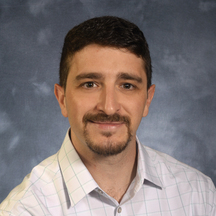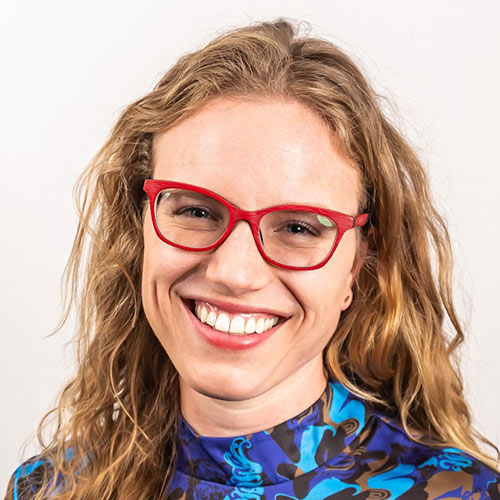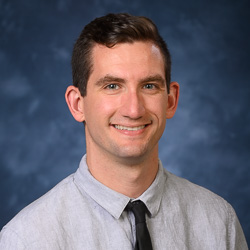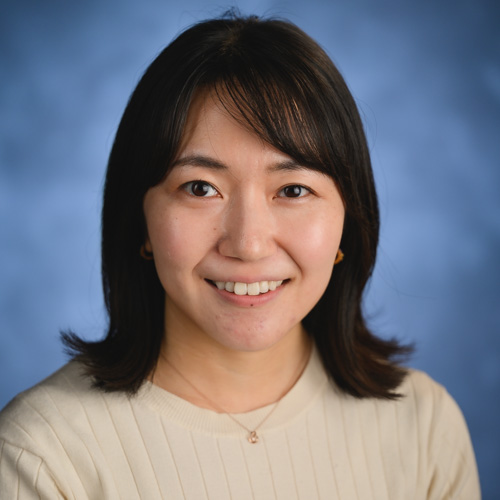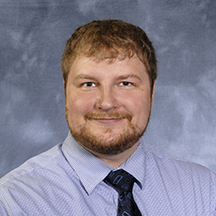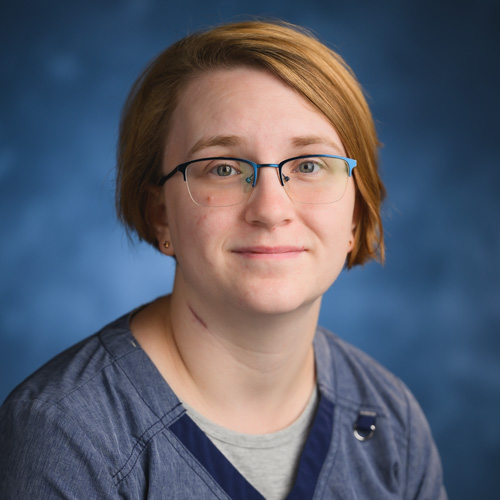Residency: Radiology
The NC State Veterinary Medicine radiology residency is a three-year program. The residency program consists of course work, clinical experience, investigation and teaching.
Formal instruction in radiation biology and the physics of diagnostic imaging is provided at the University of North Carolina, School of Medicine in Chapel Hill, NC. An investigational experience that culminates in a manuscript being submitted to a refereed journal is expected. Results of the resident project will be presented at the annual American College of Veterinary Radiology national meeting during the resident’s third year. Support for travel to the Annual Meeting of the ACVR is provided during the resident’s third year.
Program
The radiology residency program at North Carolina State University is designed to prepare the resident to take and pass the ACVR board certification examination. The program is structured such that the ACVR requirements for approved residency training programs are met upon completion of the program. Residents are eligible to sit the preliminary (written) component of the radiology board examinations at the beginning of their 3rd year. The incoming resident may have the opportunity to enroll in a dual ACVR/ECVDI (European College of Veterinary Diagnostic Imaging) program if interested; this will not require any additional time to complete the program.
During the residency, clinical experience will be gained in diagnostic radiology, nuclear medicine, diagnostic ultrasound, computed tomography and magnetic resonance imaging. Opportunity is provided for interaction with board certified specialists in other disciplines. Close supervision by and interaction with board certified radiologists is maintained throughout the program. Residents participate in six practice written examinations and weekly oral or written Known Case Conferences; these activities are designed to prepare residents to successfully complete the certification examination of the ACVR. The resident will have a minimum of thirty months of clinical experience within the first three years of the program as prescribed by the ACVR residency guidelines. The allocation of time spent in each area is based on the guidelines of the ACVR.
Each resident has an advisory committee that is responsible for monitoring the resident’s progress. Residents are evaluated formally twice each year, and opportunity is provided for input and critique from the resident. Continuation into the second and third year is performance-dependent. The advisory committee reports to the Faculty Committee on House Officer Programs and Resources. Two weeks of vacation (12 days per year are accrued); vacation is taken by arrangement with the resident director. Though not required, applicants are strongly encouraged to contact the resident director, Gabriela S Seiler, 919-513-6217 or gsseiler@ncsu.edu or to arrange an interview.
Facilities
Small Animal Radiology
- Room 1: Siemens Multix Top, Ceiling mounted unit. 80KW generator with Canon CXDI 50G Flat panel digital system.
- Room 2: Genoray Oscar Prime 15 Flat Panel Detector C-Arm.
- Room 3: Siemens Multix Top Ceiling mounted unit. 80KW generator with Canon CXDI 50G Flat panel digital system.
- GE IGS 530 Biplanar Fluoroscopy/Digital Angiography with Flat Panel Digital Detector with Tomography Capabilities.
Large Animal Radiology
- Ceiling mounted x-ray tube with mechanical and electric interlocking to an autotracking image plate holder and Canon CXDI 50G and 1417 CDXI -710C digital flat panel.
- Ceiling mounted x-ray tube with extension capabilities to floor level with Canon CXDI – 810C digital flat panel.
- MinX-ray portable generator interfaced with either CXDI 50G, CDXI -710C or CXDI – 810C digital flat panel.
Ultrasonographic equipment:
- Two Canon Aplio i700 Ultrasound Machines with two 11MC4 (microconvex), two i8C1 (convex), two i18L5X (linear matrix) and one 17LH7 (small linear “hockeystick”) probes.
- 1 Canon Aplio i500 Ultrasound Machine with the following probes: 10C3 (convex), 14L5 (linear), 6C1 (convex), 11MC4 (microconvex), and 18L7 (linear).
- Elastography, Fusion, Contrast Ultrasound and 3D imaging technology.
- 6 Sonoscape Ultrasound Machines for Teaching each with a linear and microconvex probe.
CT equipment:
- Siemens Perspective 64, Multislice helical scanner
- Samsung BodyTom 32-slice portable Equine CT
- Siemens Wizard CT workstation
Nuclear medicine equipment:
- Technicare camera retrofitted with digital imaging chain interfaced with PC based Mirage software
MRI equipment:
- 3.0T Siemens Skyra MRI suite. Unit configured for small animal and equine.
Radiology Information System and PACS
- Web-based Fuji RIS fully integrated with IBM Merge PACS with IBM Merge V8.0 Halo Viewer and ClientOutlook eUnity html5 viewer.
- Multiple Merge eFilm V4.2 workstations
- Multiple 3 monitor workstations with dual NEC 3MP monochrome monitors or dual Dell 4K color monitors.
Miscellaneous
- Fuji CR System
- Multiple workstations with NEC 3MP monochrome monitors.
Clinical Resources
Of the approximately 25,000 accessions seen annually at the Veterinary Hospital, over 18,000 are imaged by radiology. Small animals (canine, feline) comprise 80%, large animals (equine and food animals) 20% and exotic animals <1% of the imaging patient population.
Of the 2019 imaging caseload, small animal radiology comprises 8,200, large animal radiology 920, small animal abdominal ultrasound 3,700, computed tomography 970, nuclear medicine 350 and magnetic resonance imaging 720 cases.
Report Generation
Web-accessible written reports are available within 24 hours or less of imaging and residents generate over 90% of these. All reports are reviewed by the imaging faculty prior to finalization. Voice recognition software is available for those who prefer that over typing.
Didactic Courses
Residents attend didactic courses in imaging physics at the University of North Carolina, Chapel Hill and Duke University Medical Schools and other pertinent courses in Nuclear Medicine, Large Animal Imaging, and MRI as offered by other institutions.
Research Environment
Completion of a project is required. This is preferably a prospective problem-solving project and a peer-reviewed publication resulting from the project is also expected. All residents are required to present an abstract at the ACVR annual meeting; generally, this pertains to the problem-solving project. A faculty member will be assigned to mentor the research project.
Education Environment
Each resident is expected to present the findings of his or her research project at ACVR during their third year of training. In addition, each resident is required to give 1-2 presentations over the course of their training to house officers and faculty on topics relating to diagnostic imaging. Regular case presentations and interaction with 4th-year veterinary students offer additional teaching opportunities.
Radiology Rounds
Rounds attended by all residents and at least one of the duty radiologists are held 4 days per week. Residents select current cases to present at rounds and these are discussed in detail when warranted. This provides an intimate environment to fine-tune interpretive skills and to review imaging and patient-management principles.
Journal Club and Board Objectives Round
Held weekly and attended by all residents and at least one radiologist. The current literature as well as “must-know articles” will be reviewed and discussed with regards to content and study design. Board objective rounds are review sessions on topics important for the written board examination. Other topic rounds such as MRI rounds, Equine imaging rounds, neuroimaging or pathology rounds are held intermittently.
Teaching File
The image server has over 20 million images and associated reports from over 240,000 cases all web-accessible via the radiology information system). Cases with special teaching merit are coded as such when reports are finalized and are readily accessible via a web browser. The RIS also archives non-radiology patient images including ECGs, endoscopic images and movies, necropsy photos and other patient images and data. Some integration with the hospital information system (UVIS) is present.
Known Case Conferences
Known case conferences (written or oral) are held regularly every Friday from 8 am to 10 am. Approximately 49 known case conferences are given per year, taking into account holidays that fall on Fridays. This is an expected activity for all radiologists and residents.
Literature Resources
The William Rand Kenan, Jr. Library of Veterinary Medicine is located on-site and is part of the North Carolina State University Libraries.
Leadership and Faculty
Apply
This residency participates in the American Association of Veterinary Clinicians’ (AAVC) Veterinary Internship and Residency Matching Program (VIRMP) when a position is available.
Information for International Applicants
Preference is given to applicants who have graduated from a college that is accredited by the American Veterinary Medical Association. If you wish to apply for an internship or residency program things to keep in mind:
- Have your degree translated and evaluated by a reputable company. Options include: Josef Silny & Associates, Trustforte Corporation, and World Education Services
- Some programs require the TOFEL exam to qualify for a internship or residency position.
- Most foreign interns and residents are appointed to H-1B visas.
- To ensure that a foreign national candidate has the H-1B visa at the start of their program the candidate will be asked to pay for the premium processing filing fee of $1,225 USD, if necessary.
- Getting a visa takes between 4 and 6 months if the visa is expedited it takes approximately 15 business days.
- Take the initial steps and apply for The Educational Commission for Foreign Veterinary Graduates (ECFVG) certification program is accepted by all state veterinary regulatory boards and the federal government as meeting, either in part or full, the educational prerequisite for licensure or certain types of employment, respectively.
